This past
week I led a private tour for 4 ½ days here in SE Arizona for a client-friend
who has been on a couple other tours with me in past years, in Brazil and Costa
Rica. Like me, Skyler is interested in all aspects of natural history, so it
was a treat for me to be able to stop and look at flowers, insects, and other
animals as we looked for his target birds. Here is Skyler photographing a Phrynosoma hernandesi, Greater
Short-horned Lizard that was along the Nature Trail in Madera Canyon.
Skyler
actually had a short wish-list of several SE Arizona specialties, and we
cleaned up on all his primary targets, missing only a couple species that he
had actually seen with me in Costa Rica and wanted to try for his US list. One
of the top targets was this Five-striped Sparrow, which we saw in the early
evening in lower Warsaw Canyon. We camped at the same place I used this past early
January with my friends Nina (click for Nina's blog) and Galen, about ¼ mile upstream from where the
Nutting’s Flycatcher wintered.
We found
four Buff-collared Nightjars on our walk after dark (another of Skyler’s
targets), including one that sang very briefly right by our campsite. But after
the moon rose above the hills to the east, at about 11:00 p.m., the same bird
began singing from elevated perches all around our campsite, waking us up and
continuing loudly all night long. This is where I first heard a single bird
sing on March 31, 2015, and a few territories have been occupied here ever
since. No one knows if they go silent and hibernate in the winter or if they
are truly migratory here.
On our night
walk I spotted this Eleodes sp.,
desert stink beetle. I had never seen one with a projection like this (which is not an ovipositor). My submission to Bugguide revealed that there are two
species in Arizona like this, and this one looks most like E. caudiferus, although the photos there are all from northern
Arizona.
Skyler
spotted this beetle, which I first assumed was a stag beetle in the family
Lucanidae. But a much closer match is the genus Pasimachus, in the ground beetle family Carabidae.
This large
wolf spider is a Hogna sp., quite
possibly the very widespread H.
carolinensis, Carolina Wolf Spider, though in remote, under-surveyed
regions like this I know there are many taxa yet undiscovered for the US and
not pictured in any of the books or on Bugguide.
Skyler
spotted this Vaejovis spinigerus,
Stripe-tailed Scorpion in the middle of the road without the aid of a UV light.
I’ve seen it almost every time I’ve camped here, but I usually have my light to
spot them.
The next
morning we birded through the old winter territory of the Nutting’s Flycatcher,
which hasn’t been reported since early February, but I was hopeful it might
still be around and calling. No such luck. But it was very birdy, and we saw several
more Five-striped Sparrows. This is a very recently fledged Rufous-winged
Sparrow, which I identified from the parents feeding it.
I had to
look up this Amblyscirtes nysa, Nysa
Roadside-Skipper; I’m very rusty on my Arizona butterflies.
Here’s the
border fence to Mexico right where California Gulch crosses it. It would be a
travesty to have a wall built in this gorgeous wilderness, and it’s incomprehensibly
idiotic for anyone to propose such an idea.
The rest of
our trip took us from the Santa Catalina Mountains to the Santa Ritas, to the
Huachucas, and on to the Chiricahuas before we completed a huge loop back to
Tucson via Safford and Globe; we drove nearly 1000 miles. Here’s a view from
Incinerator Ridge in the Catalinas.
We saw
nearly all of the birds typical of the Madrean Pine-Owl woodlands, including
some very local specialties such as this Buff-breasted Flycatcher.
Dusky-capped
Flycatcher is also a regional specialty, but they like all kinds of woodland
and are surprisingly common here (especially given how rare they are in the
rest of the country).
Olive
Warbler is little more widespread but always a target given its taxonomic
status as a monotypic family (no, it’s actually not a warbler of any kind).
More
widespread birds here were this Painted Redstart…
…this Acorn
Woodpecker…
…and this Black-throated
Gray Warbler.
This was
Skyler’s most wanted bird, and his final North American owl species: Spotted
Owl. I posted photos of either this same bird or its mate from Sycamore Canyon in
the Patagonia Mountains in other blogs over the past year and a half.
We got lucky
that this Whiskered Screech-Owl was sitting on an open branch. It whistled back
in the daytime, revealing its presence, but more often they do this from within
a cavity, and once they spy you approaching they stop calling back and slink down into the tree before you can see them. We sat down to enjoy this bird
for some time, and after we were well down the trail I discovered I had sat on
an old prickly pear cactus pad and a few hundred glochids had worked their way
through two layers of clothing to reach my buttocks. It was only about 14 hours
later before I was finally completely rid of them.
Olive-sided Flycatcher is always a lucky find in Arizona, only briefly stopping over during migration in any patch of trees. Their wintering and breeding ranges are far from here.
Typical Asclepias tuberosa, Butterfly Milkweed
is bright orange, but the variety native to SE Arizona is golden yellow.
One of my
favorite flowers here is Erythrina
flabelliformis, Coralbean, in a large genus of what are nearly all large tropical
trees, many being a terrific food plant for many birds and insects.
We had this Erynnis tristis, Mournful Duskywing in
its typical oak woodland habitat.
Cyllopsis pyracmon, Nabokov's Satyr is
found in the same area. It’s very similar to Canyonland Satyr, and I always
have to look up the difference in the postmedian line on the hindwing.
These nymph Thasus neocalifornicus, Giant Mesquite
Bug, are everywhere right now, much prettier in this stage than later in life.
We saw
several of these Tomonotus ferruginosus,
Oak-leaf Grasshopper, on our hike to and from the Spotted Owl.
These two
lizards were sunning on the same rock side by side, high in the Chiricahauas
where we chased a Slate-throated Redstart that is summering there for the
second year in a row. This is Sceloporus
jarrovii, Yarrow's Spiny Lizard.
This is Sceloporus virgatus, Striped Plateau
Lizard.
We spied a
few cacti still blooming, simply gorgeous species. At lower elevations in the
oaks is Echinocereus pectinatus,
Rainbow Cactus.
Higher in
the mountains amongst pine and Douglas-fir, in fact next to the two lizards
above, was this Echinocereus
triglochidiatus, Claret-cup Hedgehog Cactus.
On our way
back to Tucson on the last day we were stopped for road construction right where
we had a perfect view of the Pinal Peak fire, which is apparently burning only
ground debris as a low-intensity fire and was lightning-caused on May 8th (a
rare event in early May). It’s still burning as I write this: see https://inciweb.nwcg.gov/incident/5176/



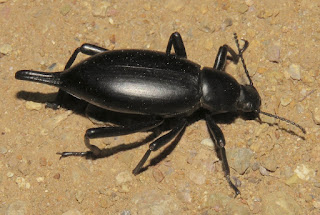
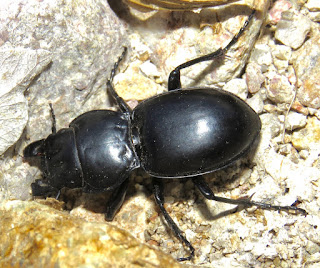
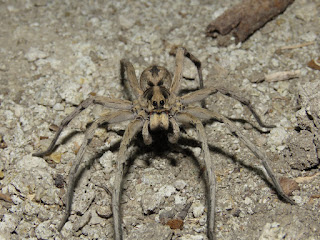






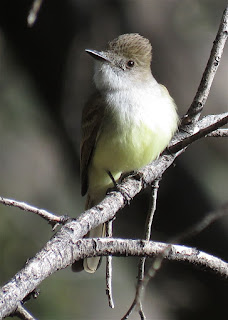



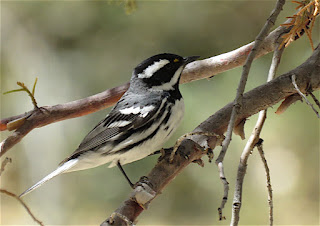

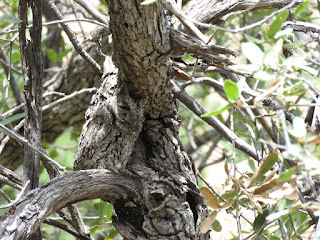

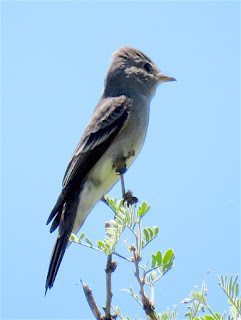
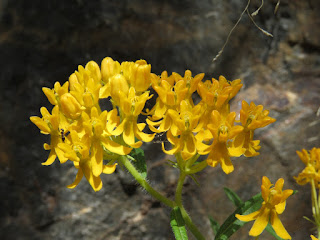
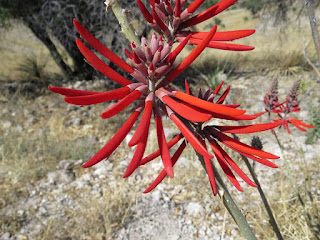

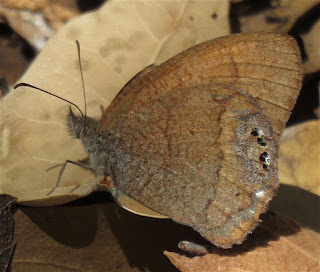




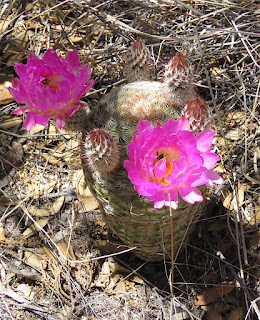
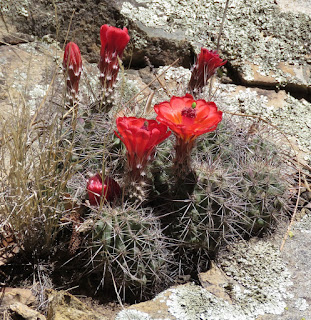






No comments:
Post a Comment